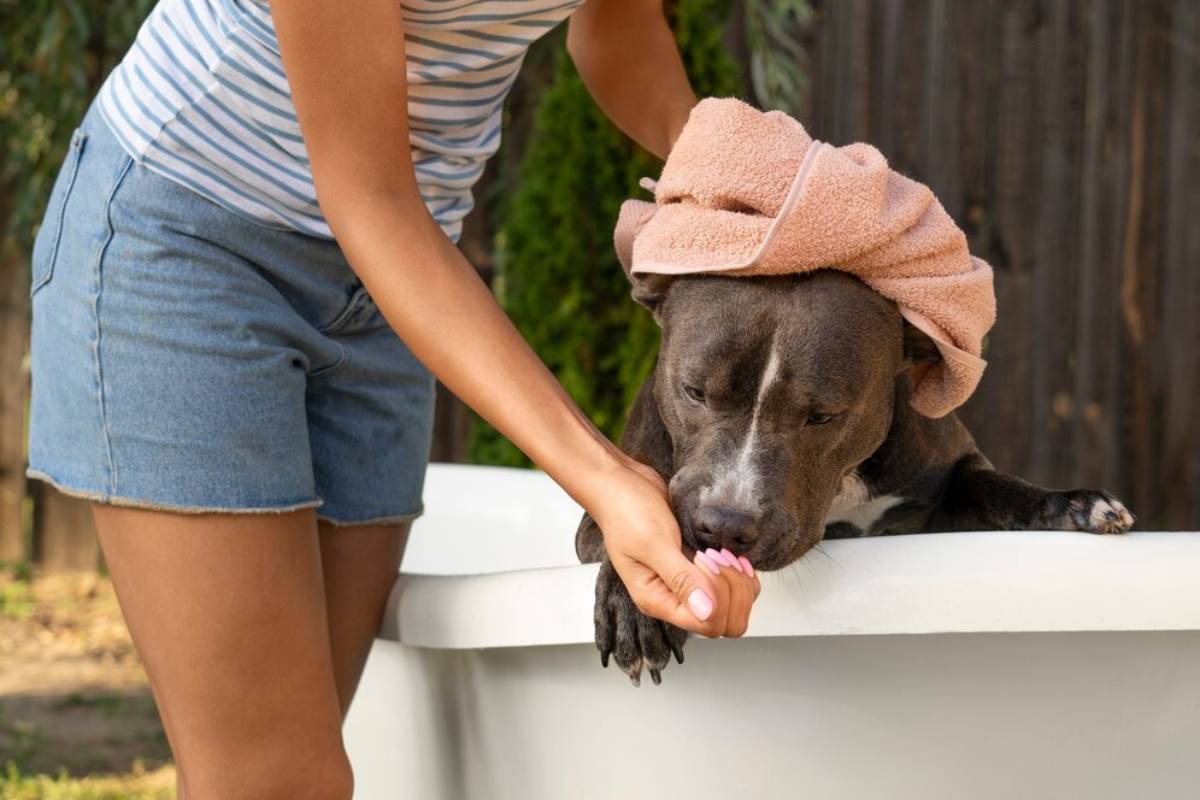
How to Recognise and Respond to Pet Emergencies
When a pet emergency happens, every second counts.
Our team found that pet owners who understand the warning signs of a health crisis are more likely to get help in time—and save their pet’s life. Emergencies don’t always look dramatic. Subtle changes in behaviour, appetite, or energy can signal something serious. Knowing what to look for—and what to do—can make all the difference.
From choking to heatstroke, trauma to poisoning, recognising the early signs and acting quickly gives your pet the best chance at a full recovery. In this guide, you’ll learn how to stay calm, assess the situation, and provide safe, immediate care while seeking veterinary help.
Pro Tip: Save your vet’s number and the nearest 24/7 animal hospital into your phone contacts—it’s one of the simplest, most effective ways to prepare for emergencies.
Quick Guide: How to Respond to a Pet Emergency
- Stay calm and move your pet to a safe location.
- Check breathing, pulse, and signs of distress or injury.
- Contact your vet or emergency clinic immediately.
- Provide first aid if trained—bleeding, CPR, or choking relief.
- Transport your pet safely for professional care.
Important: Never delay seeking help in a suspected emergency. If you’re unsure whether it’s serious, always err on the side of caution and call your vet.
Why Recognising Pet Emergency Signs Is Crucial
Pets can’t tell us when something’s wrong. That’s why owners must rely on observation.
Delaying treatment—even by minutes—can turn a treatable issue into a life-threatening crisis. Understanding what’s normal for your pet, then spotting what’s not, is the first step in early detection and rapid response.
Emergencies come in many forms, but your role is always the same: recognise, react, and get help quickly.
Top Signs Your Pet May Be in an Emergency
If you notice any of the following, seek veterinary help immediately:
1. Difficulty Breathing

- Laboured, rapid, or shallow breathing
- Open-mouth panting in cats (not normal)
- Wheezing or choking sounds
- Blue or pale gums
2. Seizures
- Sudden collapse with convulsions or muscle twitching
- Loss of consciousness
- Excessive drooling or urination during episode
Keep your pet away from sharp objects and do not try to hold them down.
3. Uncontrolled Bleeding
- Blood that doesn’t stop after 5 minutes of pressure
- Bleeding from nose, mouth, rectum, or in urine/stool
- Visible wounds or trauma
Apply pressure with a clean cloth while preparing to transport your pet.
4. Sudden Collapse or Inability to Stand

- Weakness or unresponsiveness
- Stumbling or dragging limbs
- Fainting or sudden unconsciousness
This could indicate heart issues, neurological conditions, or internal bleeding.
5. Vomiting or Diarrhoea with Blood
- Multiple episodes in a short time
- Blood in vomit or stool
- Accompanied by lethargy or refusal to eat
Signs of poisoning, infection, or gastrointestinal blockage.
6. Exposure to Toxins
- Ingestion of chocolate, xylitol, grapes, medications, or cleaning products
- Excessive drooling, tremors, vomiting, or agitation
- Known exposure (chewed pill bottle, plant, etc.)
Call a pet poison helpline or vet immediately with the suspected substance.
7. Signs of Pain or Distress
- Whimpering, restlessness, or aggression
- Swollen abdomen
- Excessive panting or shaking
- Avoiding touch or hiding suddenly
Pain in pets is often subtle—behaviour changes are key indicators.
Basic First Aid for Common Pet Emergencies
1. Choking
- Gently open the mouth to look for obstructions
- Use tweezers or fingers only if safe and visible
- Perform pet-specific Heimlich manoeuvre if needed
- Call your vet—even if the object dislodges
2. Bleeding

- Apply firm pressure with a sterile cloth or bandage
- Elevate the injured area if possible
- Wrap wounds loosely for transport
- Do not use tourniquets unless advised
3. CPR for Pets
Only use if pet is unconscious and not breathing:
- Lay pet on right side
- Compress chest (⅓ to ½ width) at 100–120 beats per minute
- Give two rescue breaths for every 30 compressions
- Continue until breathing resumes or help arrives
4. Heatstroke
- Move to a cool area
- Apply cool (not cold) water to paws and belly
- Offer small amounts of water
- Transport immediately—heatstroke escalates fast
5. Poison Ingestion
- Do not induce vomiting unless told by a vet
- Collect sample or container of the substance
- Call a vet or poison hotline with as much detail as possible
- Bring the product and your pet to the vet right away
Best Practices for Emergency Preparedness
Being prepared means acting faster when every minute counts. Here’s how to get ready:
- Keep a pet first aid kit at home and in your car
- Know your pet’s normal vitals (heart rate, respiration, gum colour)
- Create a pet emergency card with vet numbers, medications, and allergies
- Locate the nearest 24/7 animal ER and map the route in advance
- Keep vaccination and medical records in a folder or cloud storage
Practice calm handling of your pet’s paws, mouth, and ears so they’re more comfortable in emergencies.
Helpful Tools and Resources for Pet Emergencies
Equip yourself with tools that support quick decision-making:
- Red Cross Pet First Aid App – step-by-step emergency guides
- ASPCA Poison Control Line – 1-888-426-4435 (fees may apply)
- VetLocator.com – Find emergency vets in your area
- Pet first aid kits – stocked with bandages, antiseptic, and gloves
- Emergency contact magnets – quick reference near your fridge or door
Digital tools and physical prep can work hand-in-hand to save your pet’s life.
Warning: Do not give your pet any human medication without veterinary approval—even common drugs like ibuprofen or paracetamol can be fatal to animals.
Frequently Asked Questions
1. What’s considered a pet emergency?
Anything that affects breathing, consciousness, bleeding, or ingestion of toxins is an emergency. If you’re unsure, call your vet immediately for advice.
2. Can I give my pet human first aid treatments?
Some techniques (like CPR or pressure application) overlap, but medication and dosages are very different. Always consult a vet before administering any treatments.
3. How can I tell if my pet is in pain?
Changes in behaviour, posture, eating, and vocalisation are the most common signs. Pets often hide pain, so subtle clues matter.
4. What should I do if my pet is hit by a car?
Approach calmly, use a blanket or towel as a stretcher, and transport to the vet immediately—even if they appear fine. Internal injuries may not be obvious.
5. Is pet insurance helpful in emergencies?
Yes. Pet insurance can significantly reduce financial stress during emergencies, allowing you to make the best medical decisions without delay.
Stay Calm, Stay Ready, and Act Fast
Pet emergencies are scary—but preparation is the key to responding effectively. By learning to spot the warning signs, performing basic first aid, and seeking veterinary help promptly, you give your pet the best chance at recovery.
Whether it’s a sudden illness or an unexpected accident, your ability to stay calm, take action, and seek help makes you your pet’s greatest protector.
So get prepared, stay observant, and trust your instincts—when in doubt, always call your vet. Your quick response could be the difference between crisis and comfort.


